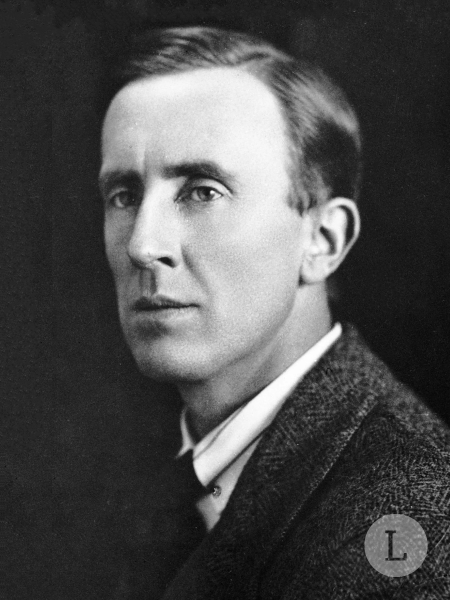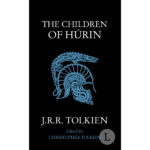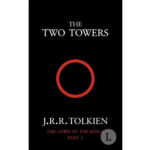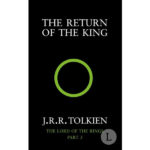Farmer Giles of Ham is a comic fantasy novella written by J.R.R. Tolkien and published in 1949. The story takes place in the fictional kingdom of Middle-England, which is populated by dragons, giants, and other mythical creatures. The protagonist of the story is Farmer Giles, a simple farmer who lives in the village of Ham. Giles is content with his life until he is visited by a giant, who demands that he give up his dog, Garm, as a tribute. Giles refuses, and a series of events is set in motion that eventually leads to his becoming a local hero.
BOOK INFO
version: CLASSIC, EBOOK, AUDIOBOOK
number of pages: 70
literary movement: MODERNISM
literary genre: FANTASY
1st edition: 1949
years of writing: MID 1930s
SUMMARY
Farmer Giles of Ham is a humorous and satirical novella written by J.R.R. Tolkien, and is a departure from his more serious works like The Hobbit and The Lord of the Rings. The story is set in a fictionalized version of medieval England, and is structured like a folk tale, complete with a dragon, a king, and a simple hero who becomes an unlikely champion.
One of the key themes of Farmer Giles of Ham is the idea that strength and courage can come from unexpected places. Giles, the titular farmer, is initially portrayed as a bumbling and ineffective character, content with his simple life in the village of Ham. However, when he is faced with a giant who demands that he surrender his dog, Garm, he refuses to back down, even though he is outmatched and outclassed. This defiance sets in motion a series of events that eventually leads to Giles becoming a local hero and being knighted by the king.
Another important theme of Farmer Giles of Ham is the idea of language and the power of words. Throughout the story, Tolkien plays with language and dialect, using puns, double entendres, and other wordplay to create humor and satire. Giles, who is initially a simple farmer with a limited vocabulary, becomes more eloquent and persuasive as he gains confidence and becomes more of a leader. The dragon, Chrysophylax, is also a master of language, using his wit and charm to manipulate and outwit his opponents.
The story also parodies and satirizes traditional heroic tales and medieval literature. Giles is an unlikely hero, more concerned with his crops and animals than with knights and dragons. Chrysophylax, the dragon, is a clever and manipulative character who subverts traditional notions of villainy. The king and his court are depicted as self-important and foolish, more concerned with ceremony and protocol than with practical matters.
MAIN CHARACTERS
Farmer Giles
The protagonist of the story, a simple farmer who lives in the village of Ham. Giles is content with his life until he is visited by a giant, who demands that he give up his dog, Garm, as a tribute. Giles refuses, and a series of events is set in motion that eventually leads to his becoming a local hero.
Chrysophylax
The main antagonist of the story, a fierce dragon who has been terrorizing the countryside. Chrysophylax is clever and manipulative, using his wit and charm to manipulate and outwit his opponents.
King
The king of Middle-England, who knights Farmer Giles after he slays the dragon Chrysophylax.
Garm
Farmer Giles’ loyal dog, who becomes a key element in the story when the giant demands that Giles give him up as a tribute.
Giant
The giant who first visits Farmer Giles and demands his dog. Although he is a formidable opponent, he is ultimately outmatched by Giles.
Caudimordax
The magical sword that Farmer Giles acquires, which gives him the power to slay dragons.
These are some of the key characters in the story, each of whom plays a role in the narrative arc of the novella. They are all depicted in a larger-than-life, exaggerated style that emphasizes the story’s humorous and fantastical elements.
Farmer Giles went home feeling very uncomfortable. He was finding that a local reputation may require keeping up, and that may prove awkward.
JOHN RONALD ReUEL TOLKIEN
TOP 10 POINTS
- Satirical Take on Medieval Literature: The story parodies and satirizes traditional heroic tales and medieval literature, presenting an unlikely hero and a clever and manipulative dragon.
- Unexpected Hero: The protagonist, Farmer Giles, is initially a simple and unassuming character, content with his quiet life in the village of Ham. However, he rises to the occasion when faced with danger and adversity.
- Language and Power: The novella explores the theme of language and the power of words, with characters using puns, double entendres, and other wordplay to create humor and satire.
- Dragon as a Villain: The dragon, Chrysophylax, is depicted as a cunning and manipulative character who is more interested in wealth and luxury than in terrorizing the countryside.
- Magical Sword: Giles acquires a magical sword named Caudimordax that gives him the power to slay dragons. The sword becomes a key symbol of his newfound strength and courage.
- Role of the King: The king and his court are portrayed as self-important and foolish, more concerned with ceremony and protocol than with practical matters. This is another example of the story’s satirical elements.
- Local Hero: Giles becomes a celebrated figure throughout the land, and is eventually knighted by the king for his bravery and heroism.
- Puns and Wordplay: The story is filled with puns, double entendres, and other forms of wordplay that add to its humor and satire.
- Humorous Tone: Farmer Giles of Ham has a lighthearted and humorous tone that sets it apart from Tolkien’s more serious works like The Hobbit and The Lord of the Rings.
- Commentary on Heroism: The story offers a commentary on the nature of heroism, and suggests that courage and strength can come from unexpected places. It also subverts traditional notions of what it means to be a hero, presenting an unlikely protagonist who rises to the occasion when faced with danger and adversity.
Overall, Farmer Giles of Ham is a witty and entertaining tale that showcases Tolkien’s skill at creating engaging and humorous fiction. The novella has been well-received by readers of all ages, and is considered an important contribution to the genre of comic fantasy literature. It is a departure from Tolkien’s more serious and epic works, but retains the same attention to detail, world-building, and creative imagination that made his other works so beloved.
ABOUT WRITER

J.R.R. Tolkien, full name John Ronald Reuel Tolkien, was an English writer, poet, and academic who is best known for his fantasy novels The Hobbit and The Lord of the Rings. He was born in Bloemfontein, South Africa on January 3, 1892, but moved to Birmingham, England with his family when he was three years old. His father, Arthur Tolkien, was an English bank manager and his mother, Mabel Tolkien, was a talented artist and musician.



